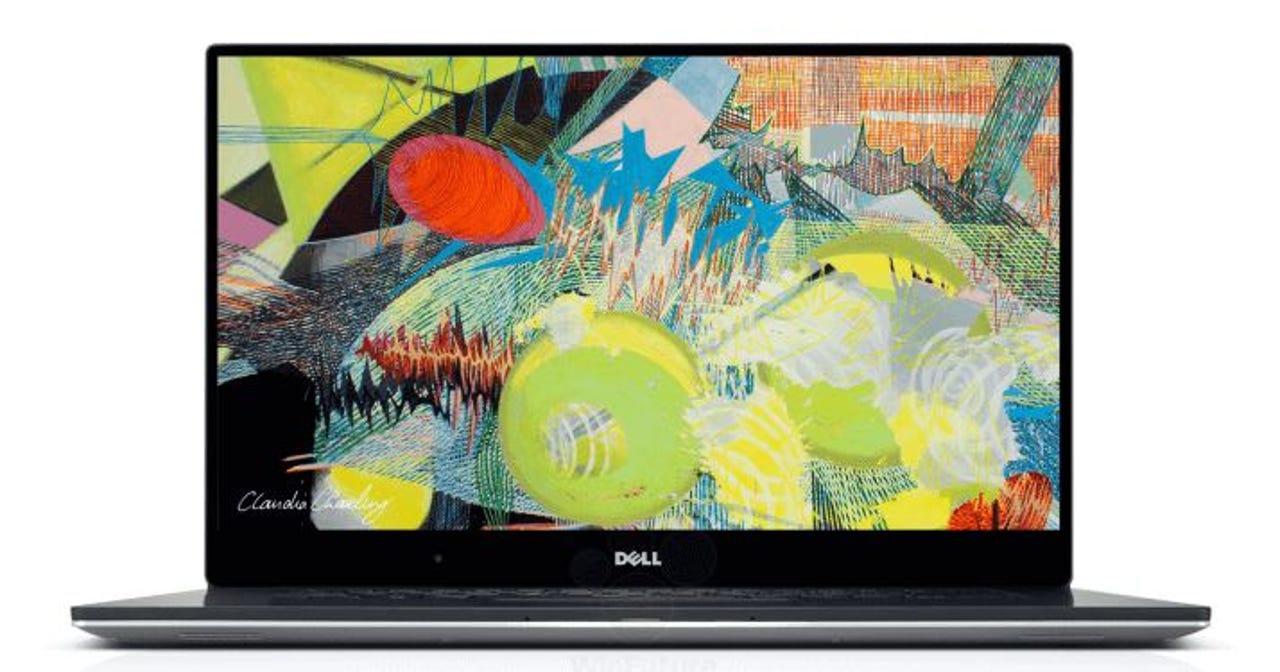Dell launches the world's smallest 15 inch laptop, updates the XPS 13, and previews the XPS 12


Dell's XPS 13 (2015) Ultrabook was a hit, so, not surprisingly, the company has launched much the same thing with a bigger 15.6-inch screen, while upgrading the processors on both systems to sixth-generation Intel Skylake.
The XPS 15 looks exactly like the XPS 13, and also has an "Infinity Edge" display with very narrow bezels, developed with Sharp. This has enabled Dell to reduce the size of the machine. Where the XPS 13 fitted a 13.3-inch screen into a body closer to the 11.6-inch form factor, the XPS 15 has been reduced to fit a 14-inch form factor.
Powerful 15.6-inch Windows laptops generally end up as desktop replacements, but the XPS 15 could realistically serve as a portable. It's not ultra-light at 3.9lbs (1.78kg), but it's lighter than a 15.4 inch MacBook Pro (4.5lbs, 2.04kg), and not much heavier than a 13.3-inch MacBook Pro (3.5lbs, 1.58kg). The thing you lose compared with bigger 15.6-inch designs is the dedicated number keypad.
The XPS 15 also has the option of a 4K Ultra HD screen with a resolution of 3840 x 2160 pixels, compared the Retina MacBook Pro's 2880 x 1800. For graphics professionals who want something better than the integrated Intel 5600 graphics, there's an optional Nvidia GeForce GTX 960M with 2GB of GDDR5 memory. A Thunderbolt 3/USB Type-C combo port allows for further expansion via a docking station.
The specification looks competitive with Microsoft's Surface Book, but at a lower price.
In a brief hands-on, I was impressed. The screen is brilliant, the backlit keyboard is good, and the trackpad is excellent. The keyboard felt like an improvement on the XPS 13 (2105) that I had on loan for review, but it's impossible to be sure when you don't have the two machines side by side. However, if you've experienced the XPS 13, the new XPS 15 feels very much the same, only bigger.
The new XPS 13 is just like the old one, only with a Skylake processor - which includes better graphics - more storage, more memory, and better battery life. It also has the new Thunderbolt 3/USB Type-C combo port, which allows for further expansion via a docking station. However, the weight has increased slightly, from 2.6lbs to 2.7lbs.
Also, XPS 13 buyers can now get up to 16GB of DDR4 memory, and up to 1TB of SSD storage. Dell's Paul Craddock said that, in the future, the maximum memory will be increased to 32GB.
What about battery life? Tricky question. Dell says the new XPS 13 delivers "up to 18 hours, 14 minutes of battery life with a Full HD display" while the XPS 15 offers "up to 17 hours with a Full HD display, 84WHr battery and SSD".
If you have the high-res screen with brightness on high and work the Core i5 or Core i7 processor hard, then you're not going to get that sort of battery life, in my experience. However, battery life should still be good enough for most users.
As well as trying the XPS 13 and XPS 15, I got a brief hands-on with two early versions of the all-new XPS 12, which Dell UK said will be launched next year (or maybe next month in the USA. See: Move over Surface Pro 4: Dell challenges with new XPS 12).
Two versions? One had an Intel RealSense camera, as fitted to some Dell Android tablets, and the other didn't. RealSense cameras work with Windows Hello in Windows 10.
The XPS 12 is completely different to the other two models in the range. They are laptops, whereas the XPS 12 is a tablet with keyboard dock. The two are not physically interlocked, just held together by magnets.
The tablet just drops into a slot at the top of the keyboard, much like Lenovo's Miix 3, and it has the same significant drawback: you can't really change the screen angle. This is where Microsoft's Surface Pro 3, with its totally adjustable kickstand, trounces everything else, including Apple's iPad Pro.
There may be a way out. Dell says: "The 2-in-1 comes standard with a mobility base, which provides a sleek full-size backlit keyboard and precision touchpad for working on-the-go, as well as the custom-built Dell Premier Folio, which provides a stand for the tablet with variable angle positions and also keeps the device safe during travel."
However, the demo devices didn't include the Premier Folio case, so I can't comment on how that works.
Given the success of the XPS 13, which is one of the best Ultrabooks on the market, I'd expect the XPS 15 to prove popular as well. It's not just small for a 15.6-inch laptop, it feels solid, offers high performance, and it looks stylish.
XPS began life as an upmarket consumer brand, but I expect a lot of business users will prefer it to the more utilitarian Latitude models, and the more expensive Precision workstations. However, opting for Windows 10 Pro instead of Home adds $50 to the price.